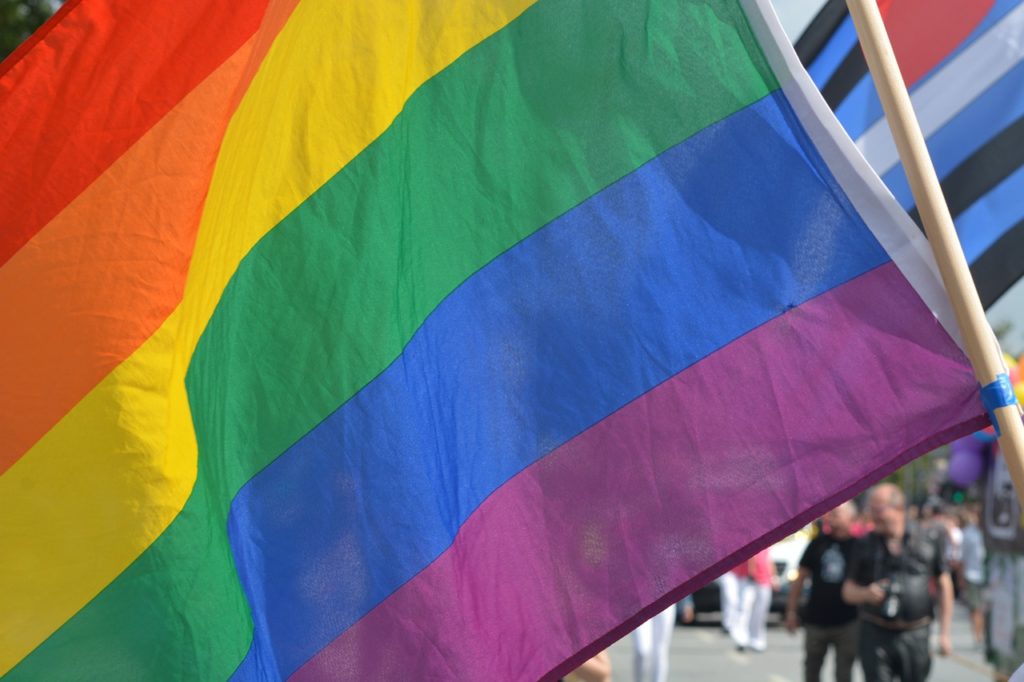Domestic abuse knows no boundaries of sexual orientation or gender identity.
LGBTQIA+ individuals are equally susceptible to experiencing domestic abuse, yet they often face additional challenges in recognising and seeking help due to societal misconceptions and stigma.
In this blog, we will delve into understanding the signs of an unhealthy relationship and overcoming barriers to accessing support for LGBTQIA+ survivors of domestic abuse.
Understanding LGBTQIA+ domestic abuse.
Domestic abuse within LGBTQIA+ relationships encompass various forms of control, manipulation, and violence, including emotional, psychological, economic, and physical abuse.
Threatening to “out” someone’s sexual orientation or gender identity can be a common tactic used to exert power and control in abusive relationships, further complicating the person’s ability to seek help.
Challenging myths and misconceptions.
To effectively address LGBTQIA+ domestic abuse, it’s crucial to debunk common myths and misconceptions surrounding the issue:
- Domestic abuse affects individuals of all genders, not just women.
- Substance use may exacerbate abusive behaviour, but it’s not the root cause.
- Domestic abuse can occur without physical or sexual violence; coercive control and manipulation are key components. Abuse can be coercive control, psychological abuse, financial or economic control, emotional abuse, harassment, stalking, online or digital abuse
Somerset Council offers short, free online awareness courses to help you learn more about domestic abuse.
- People experiencing domestic abuse often think that their perpetrator are a good parent even if they abuse me, it does not have to affect our children. The reality is children are profoundly impacted by witnessing domestic abuse, regardless of whether they are directly abused.
- Children witness abuse more often than parents realise, and the effects can be traumatic and long-lasting. For more information on the effect of domestic abuse read our blog: The silent sufferers: understanding the devastating effects of domestic abuse on children.
- Conflict in relationships is normal, but abuse is not.
- Domestic abuse transcends socio-economic status and geographic location.
- Domestic abuse is not a rare occurrence; it affects millions of individuals worldwide.
- No one provokes or deserves abuse; it’s always the responsibility of the abuser.
- Domestic abuse is not a private matter; it requires collective action and support from the community.
Barriers to Accessing Support
Despite the urgency and importance of seeking help, LGBTQIA+ individuals facing domestic abuse encounter unique obstacles in accessing support.
These barriers stem from societal prejudices, systemic inequalities, and misconceptions surrounding LGBTQIA+ relationships.
Understanding and addressing these hurdles is essential for creating inclusive support systems. Here are some common challenges LGBTQIA+ survivors may face:
1. Fear of Discrimination: LGBTQIA+ individuals may hesitate to seek help due to concerns about encountering discrimination or prejudice from service providers or law enforcement. Past negative experiences or societal stigma may reinforce these fears, leading survivors to remain silent about their abuse.
2. Isolation and Lack of Community Support: LGBTQIA+ individuals experiencing abuse may feel isolated from traditional support networks, such as family or religious communities, due to rejection or lack of acceptance of their sexual orientation or gender identity
3. Internalised Stigma and Shame: Societal misconceptions and stereotypes about LGBTQIA+ relationships can contribute to survivors internalising feelings of shame or self-blame. This may prevent individuals from recognising their experiences as abusive or seeking help for fear of judgment or disbelief.
4. Financial Dependence: Economic abuse is a prevalent tactic in many abusive relationships, including those within the LGBTQIA+ community. Survivors who are financially dependent on their abusers may struggle to access support services due to financial barriers and concerns about their economic stability.
5. Intersectional Identities: LGBTQIA+ individuals may face compounded discrimination and marginalisation due to intersecting identities, such as race, ethnicity, disability, or immigration status.
Conclusion.
By raising awareness, challenging stereotypes, and fostering inclusive support networks, we can create a safer and more welcoming environment for LGBTQIA+ people experiencing domestic abuse.
It’s essential to recognise the signs of abuse, challenge societal myths, and work towards dismantling barriers to accessing support.
Together, we can strive towards a future where all individuals, regardless of sexual orientation or gender identity, can live free from violence and oppression.
If you are experiencing domestic abuse, worried about someone you know, or are concerned about the impact of your behaviour towards others, then help is available on the Somerset Domestic Abuse website or by telephoning 0800 69 49 999, between 8am – 8pm, 7 days a week.
The service supports people in all types of relationships, regardless of race, ethnic or religious group, class, disability, sexuality, lifestyle, nationality or age.
In an emergency you should always dial 999. If you are worried that an abuser may overhear your call you can remain silent, tap the phone and dial 55 when prompted by the operator who will send help.
If you are deaf, hard of hearing or speech-impaired you can register with emergencySMS.net. Once registered you will be able to send a text to 999 if you require help in an emergency.

